Every time someone interacts with your website, you have an opportunity to convert them into customers or, at the very least, email subscribers.
If you’re not seeing the conversions you expect, a conversion rate audit can help you identify what’s holding you back and design a roadmap to make winning over your audience easier.
Today, I’ll explore everything you need to know about conducting a conversion rate optimization audit (CRO audit). You’ll learn the importance of setting goals, analyzing data, and identifying bottlenecks, and much more.
What is a conversion rate audit?
A conversion rate audit is a deep-dive analysis that shows how effective your website is at turning visitors into customers, subscribers, or qualified leads. Well-planned CRO audits will help you understand how things are going across your site and in your marketing funnels.
When done correctly, they are a great way to pinpoint areas for improvement to increase your conversions.
Why is it important?
If you’re spending money on traffic through ads or content, but the visitors aren’t converting, you’re wasting a ton of resources and time that could be spent on more targeted, engaging campaigns.
CRO audits are an excellent way to solve this problem and make sure you’re getting the most from your marketing strategy, regardless of whether it’s paid ads or traditional content marketing. You can use what you learn from your audit to make meaningful, data-backed changes that drive engagement and conversions.
Here are a few more specific benefits of CROs that you ought to know:
- Quickly identify weak points in your conversion funnels.
- Drastically boost revenue without needing more traffic or increasing ad spend.
- Create a better user experience, which makes it easier for your customers to take action and check out your product or service.
- It’s estimated that the average landing page conversion rate is 2.35%, but a CRO audit can help you achieve a conversion rate of up to 11%.
6 steps to perform a CRO audit
1. Setting clear goals and objectives
Before you start analyzing data and drawing conclusions, it’s crucial to have specific goals in mind. Ask yourself what you are trying to achieve. Do you want to boost sales? See more email sign-ups? Or generally, improve engagement?
Each goal will require you to look at different parts of your strategy and adjust on what you want to achieve.
For example, if you want more people to join your email list, you should examine the popular content on your blog. You can then use this information to create eye-catching lead magnets that will turn more visitors into subscribers.
On the other hand, if you want to increase your revenue, you’ll want to think about adding upselling to your funnel so you can increase how much each person spends when they place an order.
Everyone’s goals are a little different. Ultimately, what you hope to achieve with your audit will define which KPIs you should focus on in the coming months.
Overall, this process may include the following:
- Decide on your goal. The key is to be as specific as possible.
- Review your existing data. What is your conversion rate now, and where would you like it to be? If you don’t look into this, you’ll have a hard time coming up with an actionable plan.
- Find ways to close the gap. If your current conversion rate is 2%, and you want it to be 3%, start mapping out ways you can make this happen.
- Put your plan into action. It’s a good idea to create multiple strategies and test them one at a time to determine what works and what doesn’t.
2. Using the necessary tools
Now, let’s talk about what you’ll need to gain a comprehensive view of your website’s performance. The reality is you’re going to have a tough time putting together an actionable audit if you don’t have the right tools in your tool belt.
With that in mind, here are a few things we suggest putting together to ensure the success of your CRO audit.
Customer Relationship Management (CRM) platforms
CRM systems like HubSpot, Mailchimp, and Salesforce provide a centralized platform for storing and managing customer data, communication history, and interactions.
This data is invaluable for understanding customer preferences and behaviors, enabling personalized marketing campaigns and improving customer retention. CRMs also allow you to track customer engagement across various touchpoints, giving you insights into what strategies are most effective.
By having a comprehensive view of your customer base, you can make data-driven decisions to improve conversions and customer satisfaction.
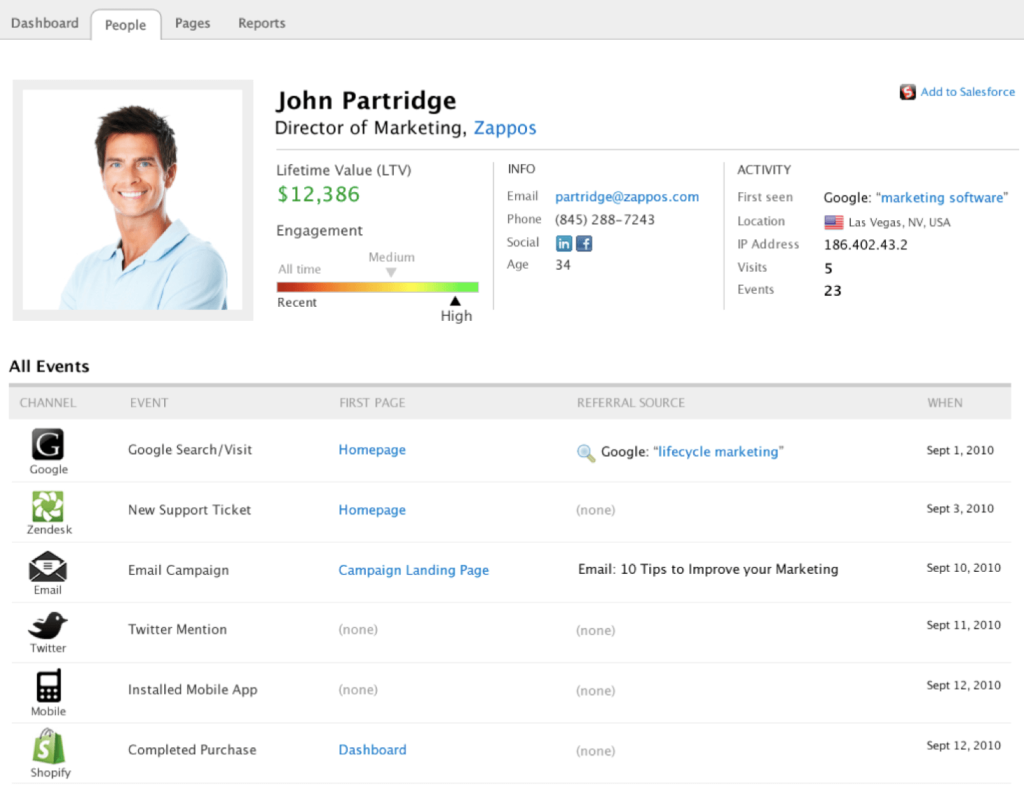
Heatmap tools
Heatmap tools like Mouseflow and Crazy Egg visually represent visitor interactions with your website by tracking their mouse movements, clicks, and scroll behavior.
This data shows what parts of a webpage grab users’ attention and which areas are ignored. Using heatmaps, you can optimize the placement of key elements like CTA buttons to increase engagement and conversions.
By identifying areas of user frustration or disengagement, you can make more effective design and layout decisions, ultimately improving the user experience.
Google Analytics
Google Analytics is essential for gaining insights into website performance, offering detailed reports on user behavior, traffic sources, and page performance.
Analyzing this data helps identify high-performing pages, as well as areas that need optimization, such as load times or bounce rates. By understanding how visitors navigate your site, you can enhance the user experience and make more informed decisions on content strategy.
Additionally, insights from Google Analytics can guide your SEO and marketing efforts, ensuring that your website aligns with audience needs and business goals.
You can make this solution even more efficient by adding Google Analytics directly to your website with a tool like MonsterInsights:
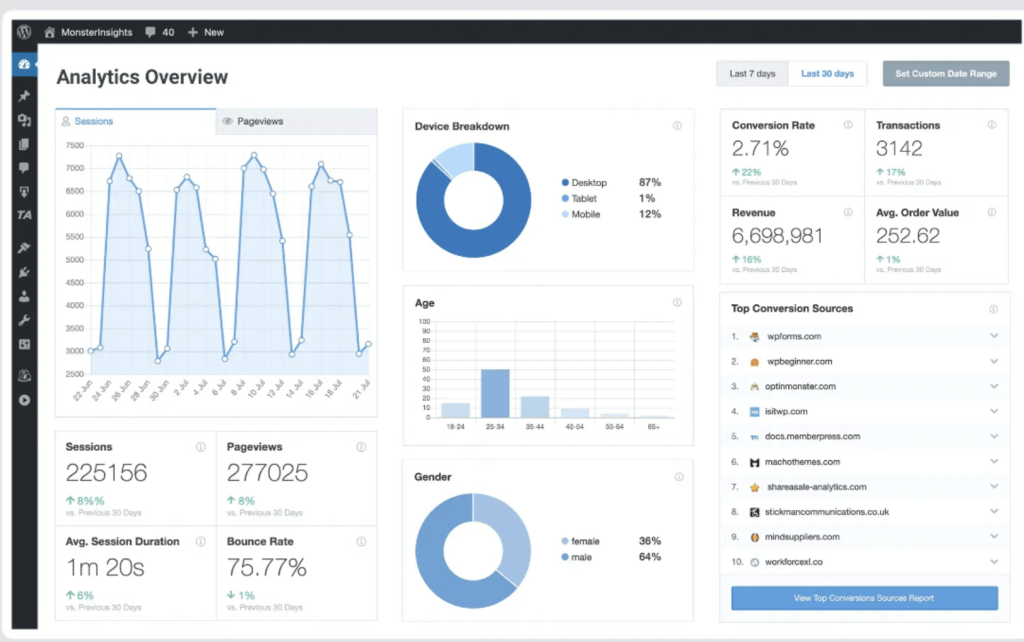
A/B testing tools
A/B testing platforms such as Optimizely or OptinMonster enable businesses to experiment with different versions of web pages, designs, or content to determine which version performs better.
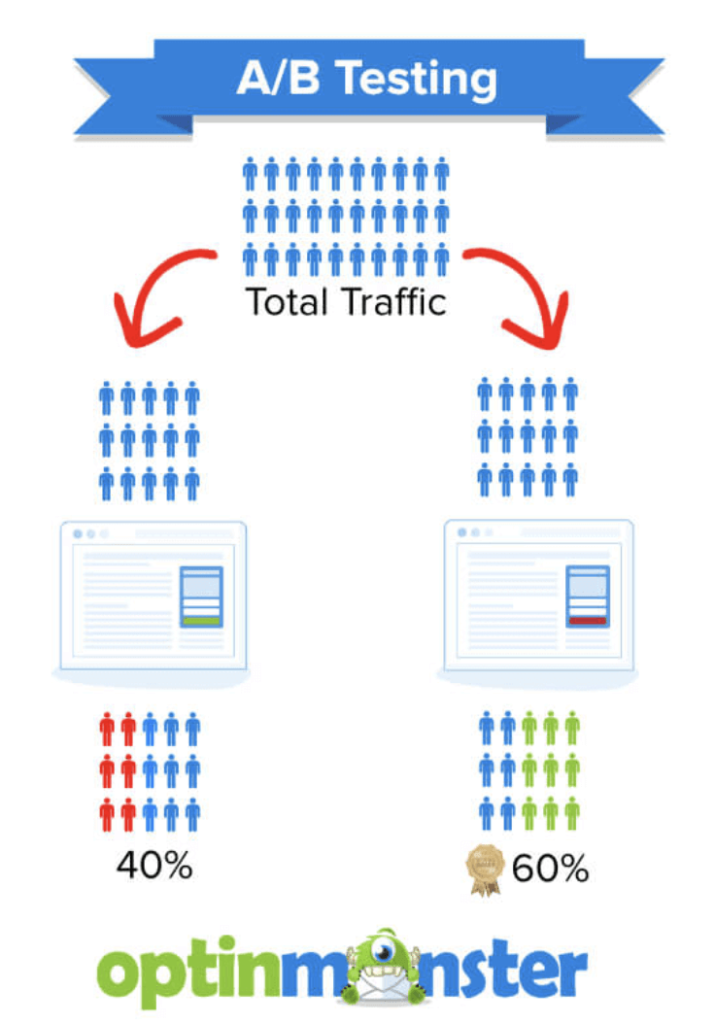
For instance, you can A/B test the wording of a call-to-action or the layout of a landing page to see what drives higher conversions. This method allows you to make data-backed improvements to your website or campaigns.
Research shows that A/B testing can lead to a 49% increase in conversions, helping businesses maximize the impact of their digital strategies.
Coupler.io
Coupler.io streamlines the process of collecting and analyzing data from multiple sources, including CRMs, Google Analytics, and other marketing tools.
It allows you to turn raw data into meaningful reports and derive insights that help you to make fact-based decisions to grow conversions and revenue. For example, you can quickly and easily review sales data and discover your top channels. This information will help you properly allocate your marketing budget, which leads to driving even more sales.
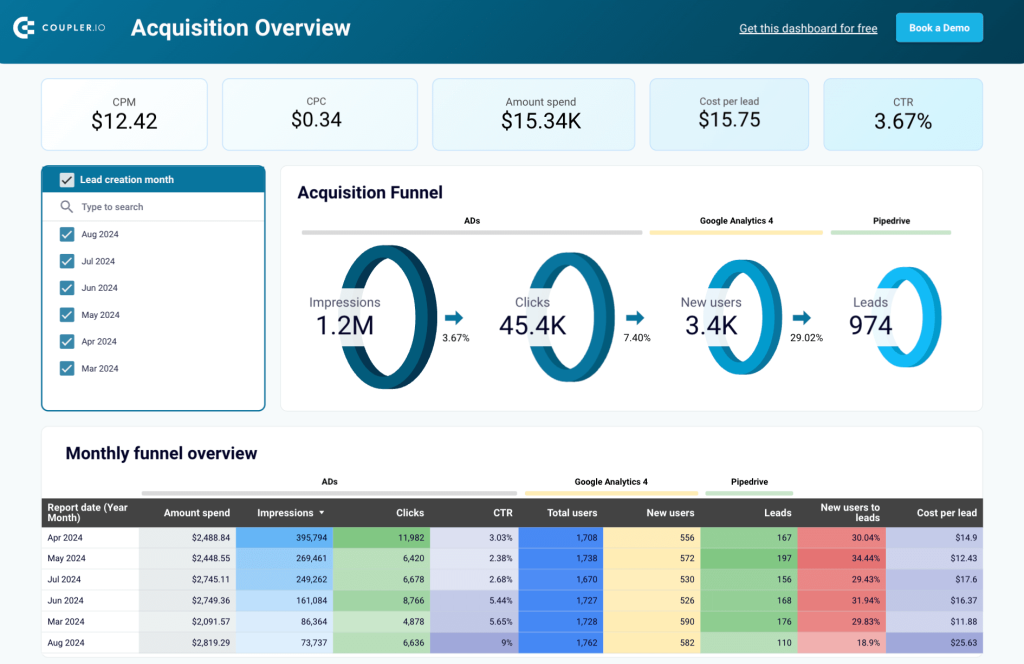
This comprehensive view of your data can also help you identify trends, patterns, and opportunities to improve conversions across your entire business.
3. Building a foundation for your CRO audit
Once you have a plan and your tools together, the next step is to start building the foundation for your audit. When you have a clear sense of direction at this stage, put everything together in a way that makes sense to you, your sales team, and anyone else who may look at these reports.
Here are a couple of different groups of metrics that business owners and marketers across all industries should track if they want to maximize their conversion rate:
Traffic sources
First, it’s hard to overstate how important it is to understand where your visitors are coming from. This type of cross-channel marketing analytics can help you figure out where conversions are falling off, which can help you make more informed decisions during your next campaign.
Since different traffic sources, like organic, paid, social, and referral traffic, typically have different patterns, breaking your conversions up by source is a good starting point.
Let’s say you notice that your conversions are between 2-3% across all traffic sources except social, which is at .5%. This could signify that you aren’t reaching your intended audience. You may want to adjust your keywords, marketing, or social platforms altogether based on this information.
User behavior and engagement
You’ll also want to take a look at user behavior and engagement across your entire site. Pages per session, average duration, and exit pages are all factors worth keeping an eye on since these factors all directly impact conversions.
If, for instance, over half of your visitors leave when they are on three specific pages, you need to take a look at them and figure out why. What makes them different from all the other pages on your site? Understanding what works and what doesn’t will help you create more engaging, conversion-worthy content.
It’s also important to look at bounce rates and time on site for each traffic source. If one source has an abnormally high bounce rate, this indicates that your site isn’t meeting the expectations that were established on the ad or in the search results.
Landing page performance
Regardless of your industry, there’s a good chance you use landing pages to win over your visitors. These pages are critical for conversions because, as the name implies, they are usually where a person lands on your site.
If they’re not impressed by what they see, there’s a good chance they’ll leave without taking action, which goes directly against your goals.
With this in mind, you’ll want to carefully review your landing pages and all of the elements that make up this crucial part of your site. I suggest figuring out which CTAs lead to more sales and what all of your top-performing pages have in common.
Use what you learn to shape your future products, generate ideas for marketing campaigns, and refine your website design, and there’s a good chance your conversion rates will gradually increase.
4. Getting the most from your data
While data is great at telling you what’s happening, user feedback can often help you understand why.
That’s why once you’ve pulled and compiled the data, you need to combine it with qualitative data so you can better understand what’s going on with your audience and how it’s impacting your conversion rate.
On-site surveys and feedback forms
I suggest sending out regular feedback forms to your subscribers and making it easy for website visitors to report a problem.
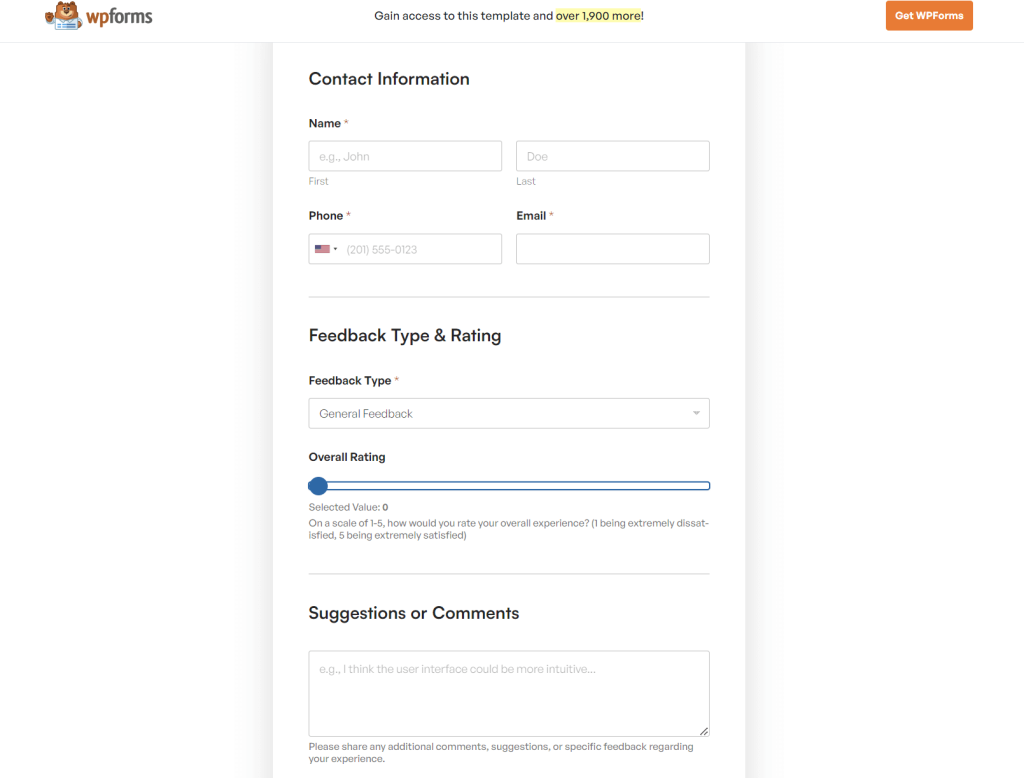
You could, for example, learn that the reason so many visitors are bouncing from your site is that it doesn’t work well on their mobile devices.
If you give your paying customers and casual website visitors opportunities to share their thoughts, you can use this information to add context to your conversion rate audit. This will give you a clear path to fix any problems that may arise.
Review session recordings and heatmaps
Another valuable way to gather qualitative data is by using session recordings and heatmaps, which we touched on briefly in the last section.
This method can highlight specific areas of friction in the user journey. For example, if you notice that users repeatedly click on non-clickable elements or abandon a form halfway through, you can investigate further to understand why those actions are taking place.
Pairing this visual data with user feedback reveals usability issues that might be negatively impacting conversion rates. Such insights can ultimately help you design a user flow that enhances the overall experience.
Review chat transcripts
There’s undoubtedly a ton of helpful information in the chat transcripts between your customers and your live chat team. People tend to reach out to support agents when they have a question or concern. If you look through this data, you can identify patterns and make meaningful changes to your site, which means more conversions.
For example, if you see customers saying they don’t understand your pricing page, then it’s time for an overhaul, so it’s much easier to understand. People do not handle friction well. If a couple of people complained about this, you can bet a lot more saw it as a problem but left without saying anything.
Making use of data from chat transcripts can help you create a better experience for visitors to your site.
5. Identifying bottlenecks
You’ll also want to keep an eye out for common conversion bottlenecks that can impact your traffic and engagement. Here are a few we highly recommend checking every time you conduct a CRO audit:
- Slow loading times: After 2 seconds, a 1-second delay can result in a whopping 7% loss in conversions. We suggest using Google’s PageSpeed Insights to see where your site stands as well as to find ways to improve your loading time.
- Poor mobile experience: Did you know that more than half of all website traffic happens on smartphones? This statistic highlights why it’s so important to make sure your site is responsive. Even minor UX issues on mobile can drastically hurt conversions.
- Ineffective CTAs: You need to compare CTAs that get traction versus ones that don’t and figure out what’s working well.
- Poor customer support: Customers are far more likely to engage with a business if they can get help when they need it the most. If your team isn’t available 24/7, and you don’t have a good resource center or chatbot program, this can cause a significant drop in conversions.
Other issues could arise based on different factors, like the size of your business, what you offer, and your intended audience. CRO audits can help you identify these problems before they have a long-term impact on your reputation and conversion rate.
6. Measuring and reporting audit results
Here are some of the general components you need to track:
- Website performance: Calculate load times, mobile responsiveness, and technical errors. People are not going to go through your sales funnel if your site doesn’t work for them.
- User experience (UX): Assess navigation with the help of tree testing tools. Focus on accessibility and how clearly you illustrate your product benefits and value proposition. People should understand why your brand is worth their time and how it will add value to their lives.
- Call-to-actions (CTAs): Monitor your CTAs across various landing pages so you can figure out what placement, phrasing, and colors turn more visitors into customers.
- Forms: Your forms are how people become customers or email subscribers. You’ll want to review your form analytics, analyze completion rates, and identify any friction points in your forms to improve conversions.
- Analytics: You’ll also want to look at data from multiple sources. You can then combine all of this data into one easy-to-read report with Coupler.io.
This information will help you create actionable reports that show what worked and what needs further optimization. Tracking your results post-audit is just as important as starting in the first place. You need to ensure the adjustments you make have a positive effect on your conversions and bring a better experience for visitors and customers alike.
If you wait until your next audit, you could miss easy opportunities to maximize conversions that you missed during your initial assessment.
How often should you perform a CRO audit?
As a general rule, you’ll want to conduct a CRO audit at least every six months. However, most businesses need to do this more often, as they are consistently launching marketing campaigns and releasing new products. You should also consider conducting an audit if you notice a significant drop in conversions.
Final thoughts: turning insights into action
There’s no question that a well-conducted conversion rate audit can be transformative for your business. All of this data will help you make meaningful changes that will result in a better experience for everyone who decides to engage with your site.
Everything we covered today will help you start this process. It’s worth remembering that this is a little different for everyone, so make sure you keep your goals, industry, and target audience in mind each step of the way.
With enough time and patience, you’ll be well on your way to optimizing your website for more clicks and conversions.




